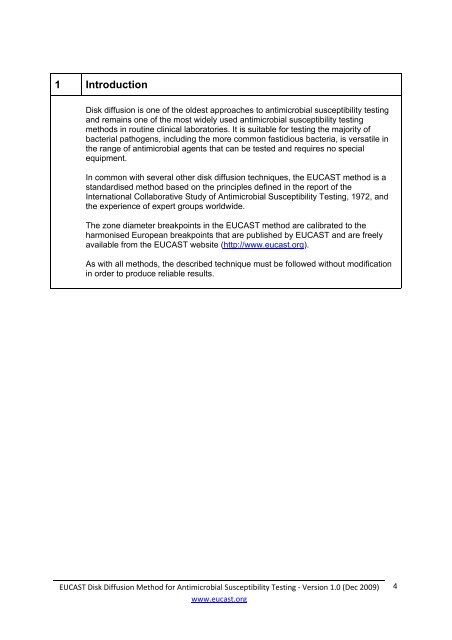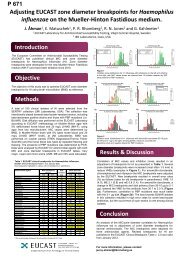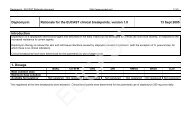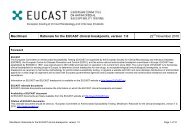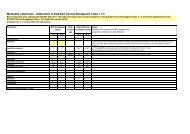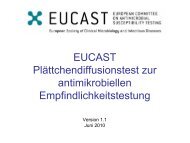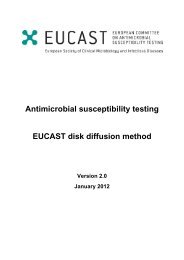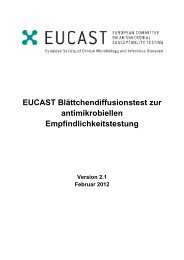Antimicrobial susceptibility testing EUCAST disk diffusion method
Antimicrobial susceptibility testing EUCAST disk diffusion method
Antimicrobial susceptibility testing EUCAST disk diffusion method
You also want an ePaper? Increase the reach of your titles
YUMPU automatically turns print PDFs into web optimized ePapers that Google loves.
1 Introduction<br />
Disk <strong>diffusion</strong> is one of the oldest approaches to antimicrobial <strong>susceptibility</strong> <strong>testing</strong><br />
and remains one of the most widely used antimicrobial <strong>susceptibility</strong> <strong>testing</strong><br />
<strong>method</strong>s in routine clinical laboratories. It is suitable for <strong>testing</strong> the majority of<br />
bacterial pathogens, including the more common fastidious bacteria, is versatile in<br />
the range of antimicrobial agents that can be tested and requires no special<br />
equipment.<br />
In common with several other <strong>disk</strong> <strong>diffusion</strong> techniques, the <strong>EUCAST</strong> <strong>method</strong> is a<br />
standardised <strong>method</strong> based on the principles defined in the report of the<br />
International Collaborative Study of <strong>Antimicrobial</strong> Susceptibility Testing, 1972, and<br />
the experience of expert groups worldwide.<br />
The zone diameter breakpoints in the <strong>EUCAST</strong> <strong>method</strong> are calibrated to the<br />
harmonised European breakpoints that are published by <strong>EUCAST</strong> and are freely<br />
available from the <strong>EUCAST</strong> website (http://www.eucast.org).<br />
As with all <strong>method</strong>s, the described technique must be followed without modification<br />
in order to produce reliable results.<br />
<strong>EUCAST</strong> Disk Diffusion Method for <strong>Antimicrobial</strong> Susceptibility Testing ‐ Version 1.0 (Dec 2009)<br />
www.eucast.org<br />
4


